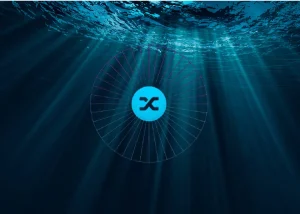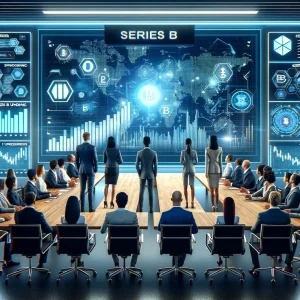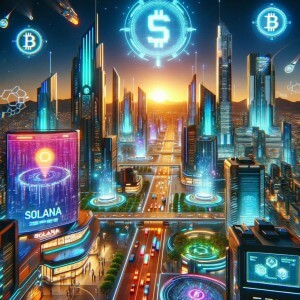A learning ecosystem is a system of people, content, technology, culture, and strategy, existing both within and outside of an organization, all of which have an impact on both the formal and informal learning that goes on in that organization. The education ecosystem is the best sample of a learning ecosystem, and it has a culture formed both intentionally and unintentionally.
Current circumstances threaten the very fabric of that culture and the time is ripe for the adaption of a more effective ecosystem, whereby educational resources need to seamlessly work together. If not, schools risk disintegration as their leaders mull about school reopening steps and take up significant chunks of time trying to integrate them.
“Learning ecosystem” might seem like a buzzword on the surface, but it’s an old concept that continues to advance as technology advances. We’ve always known that learning is an intrinsically human activity that needs to be supported in many places and in many ways.
Enters the blockchain and with it comes questions: Will Internet access over the mobile phone make rapid advances possible in education in rural developing countries? And where can blockchain assist?
The popular view of the development of mobile technology emphasizes the rapid spread of the technology, high adoption rates amongst the youth, and reducing costs of access. Access to smartphones and tablets has driven up the hopes of this possibility.
The limiting factor, apart from access to well prices devices, is access to cheap data. Alliance for Affordable Internet (A4AI) reported that the affordable rate of data should be 2 percent of monthly income. People living in Africa are charged an average of 7.1 percent of their monthly salary for a gigabyte (GB) of mobile data, more than 3.5 times the threshold considered affordable.
Dear Diary
My Pitaji is always complaining about me watching videos on my phone because he says data is too expensive. But I need to watch Khan Academy for school, and they teach using videos, so what do I do?
Saanvi
Learning ecosystem on the blockchain cuts high data costs
Keep in mind that a learning ecosystem isn’t an all-or-nothing deal. You can scaffold the maturity of your learning ecosystem over time. Start with making a single program more of an ecosystem or enabling two systems to start talking to each other (e.g. start with teachers and SharePoint, add a learning record system and mobile solution the following year, and so on). You can break up the process of creating your learning ecosystem depending on your goals, scope, budget, and resources.
The earn-as-you-learn feature of this learning ecosystem is the juice on the tank that will make the system startup and go. Man does not live by bread alone, but man cannot pay bills and live a decent life without some form of income. This learning ecosystem on the system needs to be facilitated by an earn-as-you-learn feature to be able to achieve 3 things:
- Lowering of data costs
- Better trained teachers
- A move to equitable education for all
Lack of competition in a learning ecosystem on the blockchain
Dhanaraj Thakur, research director at the World Wide Web Foundation, said “Access to broadband internet is still too expensive,” The limiting factor is the number of mobile service providers in many areas, with large areas only having one of two, creating monopolies. The regulatory frameworks and cost of the barrier to entry make it impossible for less capitalized entrants to get established in these countries.
The compound effect of time as technological advances rocket forward is that more and more people are left behind in the wake of this advance. The 2019 Affordability Report, estimates that people in countries with low levels of mobile and internet competition pay about US$3.42 per gigabyte (GB) of data more than those in countries with established competitive markets. A4AI says this rate makes access to data and the internet, is “unaffordable” for many people in low-income countries.
Claire Melamed, CEO of the Global Partnership for Sustainable Development Data, says it is vital that “technological advancement doesn’t reinforce disadvantage”.
Data is gold, the source of power we cannot do without
The UN’s goal of universal access is still a long way off even though the 50 percent mark was reached at the end of last year,
Learning ecosystems are the customizable “thing” that you build to spec after you know what all those specs are. The word itself is enticing. An ecosystem is alive and evolving – the beating heart of the community. COVID 19 has taught us all about the need for connection, how tracing and linking, providing clear data to all could spell the difference between life and death.
The costs saving ability of blockchain technology is spoken about as a key factor in the technology’s adoption, but the question of how this can be applied practically to lower the cost of data and giving access to marginalized students still needs to be understood.
There is also a marked difference between prepaid and contract data. In India, which has a significantly lower cost to countries in Africa per Gigabyte, it is still a lot more expensive to download articles on prepaid data vs contract data.
As an example, naïve users do not usually understand costs and a few make the mistake watching a few videos and see their meager prepaid deposits disappear very quickly. The cost of downloading a 27-page article from Wikipedia for a student on prepaid rates is significantly higher than for a researcher who downloads the same article at less than one-tenth of that cost because he has committed to a monthly data plan from his cellular service provider.
Increase confidence and a sense of control in times of stress
In an ideal ecosystem, students could see that they can recreate their plans. They are made to realize that they are in control of how they respond to any situation in their life—increasing confidence and a sense of control in times of stress. Those who lead can find ways NOT to let anyone lag behind.
That’s the crux of a blockchain ecosystem, to make access equally available to those who seek to be part of the ecosystem, whether they are administrators, teachers, facilitators, students, – anyone with verifiable, usable skills – they will find their place. This is just one goal but the greater concern is that students need safety now more than ever in these turbulent times. We need to put compassion before any educative goals to help students cope with the learning ecosystem on the blockchain requirements.
Could incentives assist in encouraging new entrants and solutions to this problem as a way to fast track the change needed to ensure students in developing countries are not left behind? That’s the crux of the conundrum facing us today.





